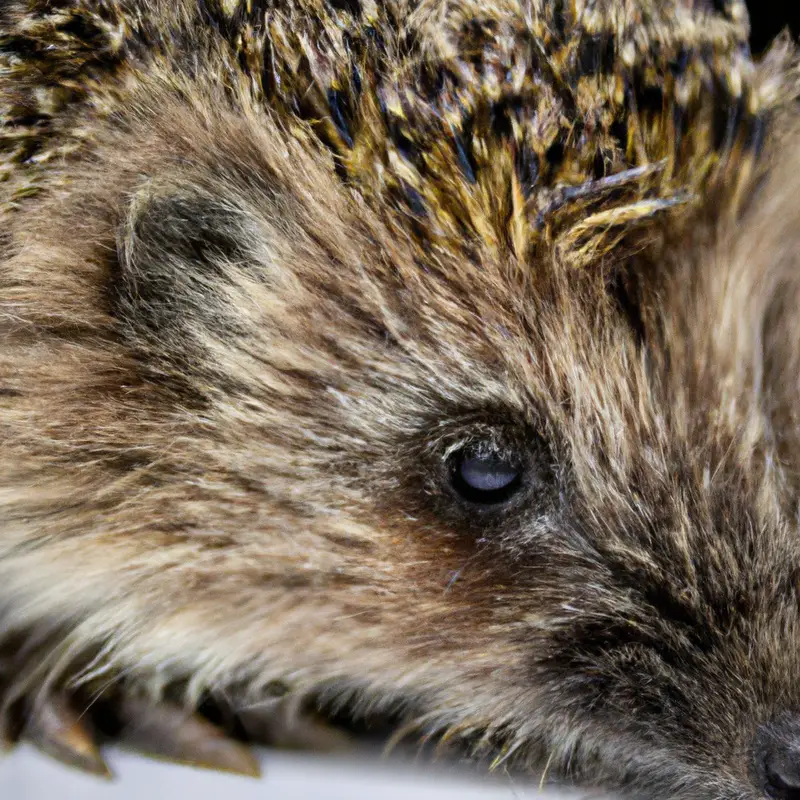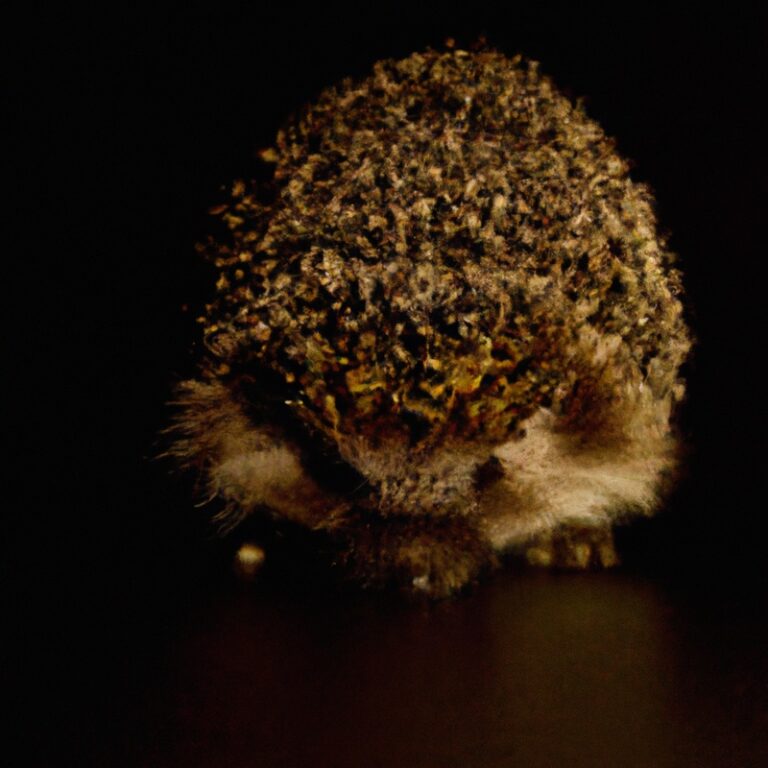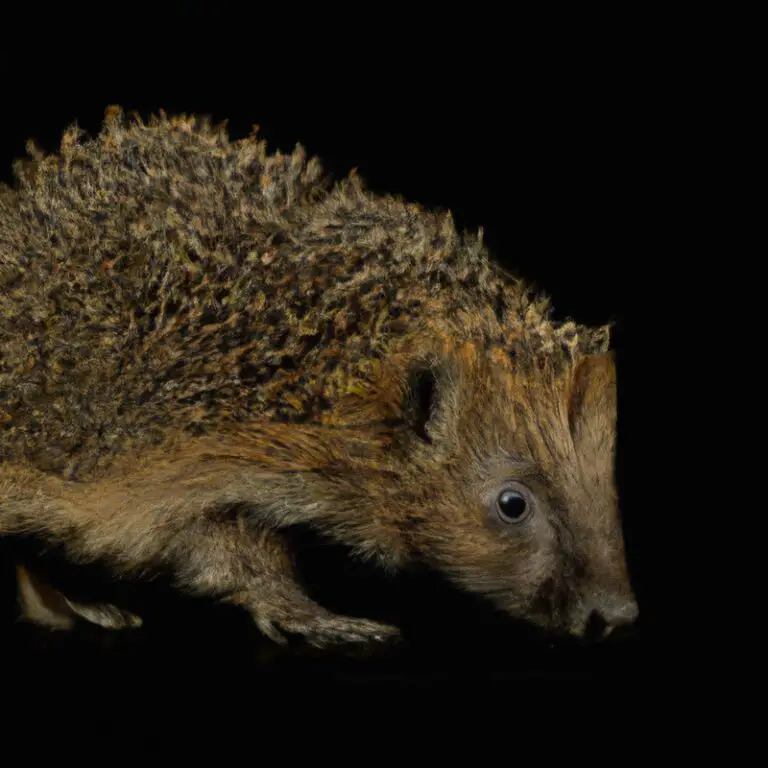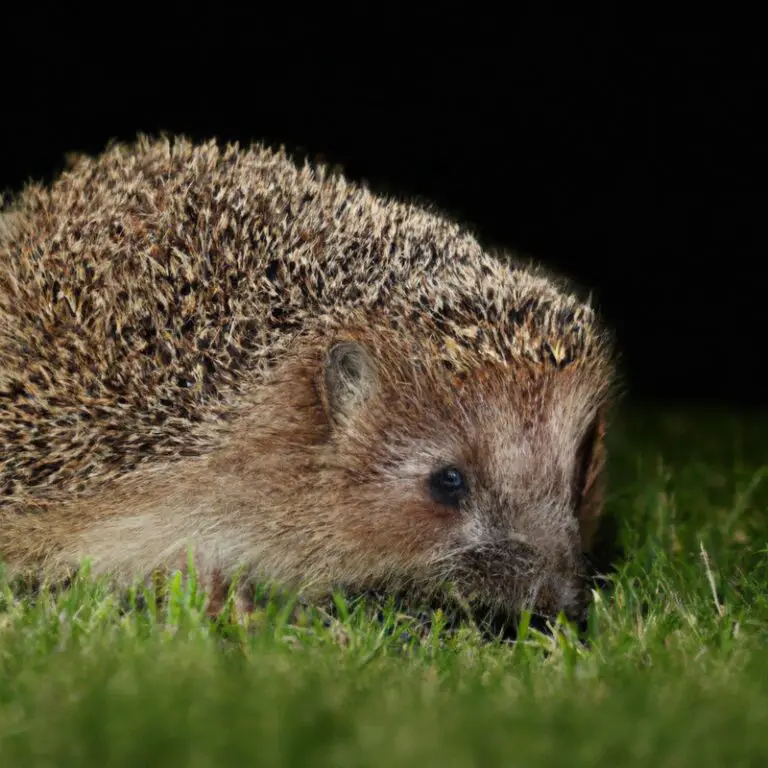What Are Common Hedgehog Behaviors?
Key Takeaways:
- Hedgehogs are nocturnal creatures that are most active during the night.
- Hedgehogs are known for their defensive behavior of curling up into a ball.
- Hedgehogs are solitary animals that prefer to live alone.
- Hedgehogs engage in exploratory behaviors, such as foraging and burrowing.
Are you curious about our prickly little friends, the hedgehogs? These charming creatures have some fascinating behaviors that are worth exploring.
In this article, we’ll dive into the world of hedgehog communication, sleep patterns, feeding habits, exercise needs, grooming routines, territorial behaviors, and socialization.
Whether you’re a hedgehog owner or just have a soft spot for these spiky mammals, understanding their common behaviors can help you provide them with the care and attention they need. So, let’s unravel the mysteries behind those adorable quills and discover the secrets of hedgehog behavior together!
| Behavior | Description |
| Self-Anointing | Hedgehogs will sometimes contort their body, drool, and spread saliva on their quills as a way to investigate a new scent or taste. |
| Balling Up | When feeling threatened or scared, hedgehogs curl into a tight ball, with their quills pointing outward for protection. |
| Nocturnal Activity | Hedgehogs are primarily active during the night and may sleep during the day, adjusting their schedule based on their environment. |
| Exploring and Foraging | Hedgehogs have a natural instinct to explore their surroundings and forage for food, using their snout to root around. |
| Hissing and Snorting | When hedgehogs feel threatened or agitated, they may hiss or make snorting noises as a warning to potential predators or perceived threats. |
| Spikes Up | When a hedgehog feels threatened or startled, it will raise its quills to make itself appear larger and more intimidating. |
| Burrowing | Hedgehogs are skilled burrowers and may dig into loose soil, leaf piles, or other suitable materials to create a cozy nest or hideaway. |
Understanding Hedgehog Communication
Hedgehog communication involves vocalizations, body language, postures, scent marking, and anointing behaviors.
Vocalizations and their Meanings
Hedgehogs may not be the chattiest animals, but they do have a few vocalizations that they use to communicate. Here are some common hedgehog vocalizations and their meanings:
- Snuffling or Snorting: This sound is often made when a hedgehog is exploring or sniffing around. It’s a way for them to communicate their curiosity or excitement.
- Hissing: When a hedgehog feels threatened or afraid, it may hiss as a warning sign. It’s their way of saying, “Back off!”
- Clicking: Hedgehogs may make a clicking sound when they are content and relaxed. It’s a sign that they are feeling comfortable and at ease.
- Purring: Similar to cats, hedgehogs can purr when they are feeling happy and content. It’s a gentle, rhythmic sound that indicates they are feeling relaxed and safe.
These vocalizations, although limited, can still provide valuable insights into a hedgehog’s emotional state and overall well-being. So the next time you hear your hedgehog making a noise, pay attention and try to understand what they might be trying to tell you.
Body Language and Postures
Body language and postures play a significant role in hedgehog communication.
Here are a few behaviors to look out for:
- Curling into a ball: When a hedgehog curls into a tight ball, it usually means they feel threatened or uncomfortable. It’s their way of protecting themselves.
- Spikes raised: If you notice a hedgehog with its spikes standing on end, it could be a sign of fear or agitation. They are trying to appear more intimidating.
- Hissing or clicking sounds: Hedgehogs may make hissing or clicking noises if they are scared or irritated. This is a warning sign that they want to be left alone.
- Sniffing and exploring: Hedgehogs have a keen sense of smell, and when they are relaxed, they will often sniff around their surroundings to investigate.
- Wiggling nose and ears: A hedgehog’s nose and ears may twitch or wiggle when they are alert or interested in something. It shows their curiosity and engagement.
- Stretching and yawning: Similar to humans, hedgehogs may stretch and yawn as a way to relax and prepare for sleep. It’s a reassuring sign that they are comfortable in their environment.
Understanding these body language cues can help you better understand your hedgehog’s mood and needs.
It’s always important to observe and respect their behavior to ensure their well-being.
Scent Marking and Anointing Behaviors
Scent marking is a typical behavior observed in hedgehogs. They use their scent glands to mark their territory and communicate with other hedgehogs.
Anointing, on the other hand, involves the hedgehog licking or nibbling on a new scent and then spreading it on their spines.
It is believed that anointing helps them recognize unfamiliar smells or predators. Both of these behaviors play a significant role in hedgehog communication and social interactions.
Hedgehog Sleep Patterns and Habits
Hedgehogs are nocturnal creatures and have specific sleep patterns and habits.
They typically sleep for about 18 hours a day, waking up during the night to search for food and explore their surroundings.
Nocturnal Nature of Hedgehogs
Hedgehogs are primarily nocturnal animals, meaning they are most active during the night.
This is an innate behavior that they have developed over time.
During the day, hedgehogs tend to sleep, usually in a nest or a burrow they have made.
When the sun sets and darkness falls, hedgehogs wake up and begin their nightly activities.
They forage for food, explore their surroundings, and interact with other hedgehogs.
Their nocturnal nature is an important part of their behavior and is crucial for their survival in the wild.
Typical Sleep Patterns and Duration
Hedgehogs typically sleep during the day and are more active at night, which makes them nocturnal animals.
Their sleep patterns can vary, but on average, they can sleep for around 18 to 20 hours per day.
Hedgehogs are known to have short bursts of activity called “torpor,” where they wake up for a short period and then go back to sleep.
It’s important to provide them with a quiet and dark sleeping area to ensure they get the rest they need.
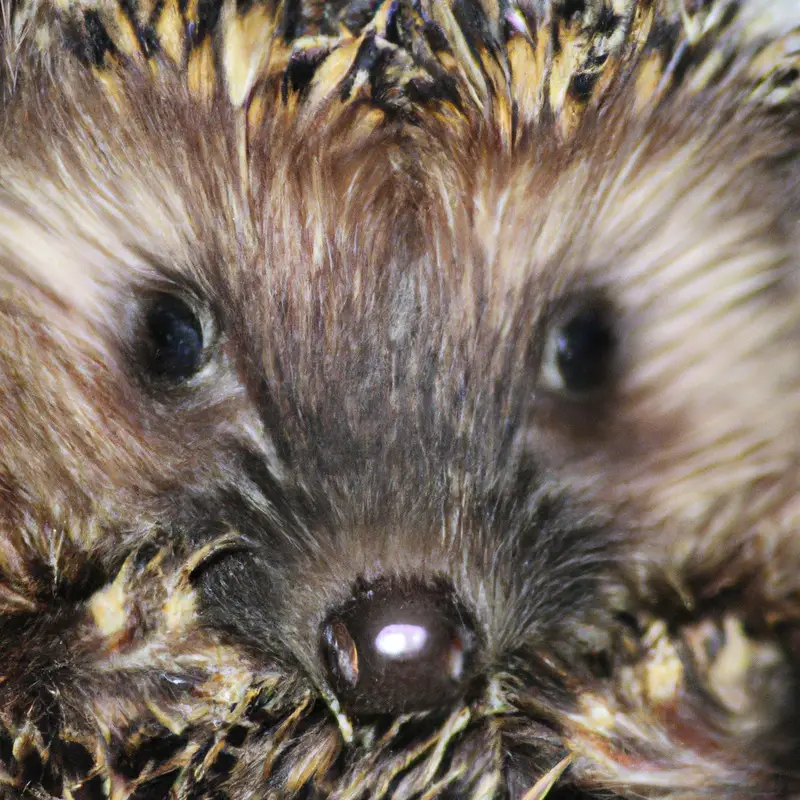
Signs of Disrupted Sleep or Unusual Behavior During Sleep
During sleep, hedgehogs may display signs of disrupted sleep or unusual behaviors.
These can include excessive movement or twitching, frequent awakening, or restless behavior.
Some hedgehogs may even exhibit sleepwalking or sleep aggression.
If you notice these behaviors in your hedgehog, it is important to ensure their sleeping environment is comfortable, without excessive noise or disturbances.
Providing a cozy and secure sleeping area can help promote more restful sleep for your hedgehog.
Hedgehog Feeding Behavior
Hedgehog feeding behavior includes their natural diet in the wild and their eating habits in captivity, as well as the possibility of overeating and indigestion.
Natural Diet of Hedgehogs in the Wild
In the wild, hedgehogs have a natural diet that consists mainly of insects, worms, and other small invertebrates. They are known to be opportunistic feeders, so their diet can vary depending on what is available.
Hedgehogs have also been observed eating fruits, berries, and even small vertebrates like frogs or mice.
It’s important to mimic their natural diet when feeding pet hedgehogs to ensure they receive the proper nutrients. Commercial hedgehog food and a variety of insects can help provide a balanced diet for these adorable creatures.
Common Eating Habits and Preferences of Hedgehogs in Captivity
Hedgehogs in captivity have specific eating habits and preferences. They are insectivores, so their diet consists mainly of insects, worms, and small invertebrates.
They also enjoy eating fruits, vegetables, and some types of cat food.
It’s important to provide a varied diet for them to ensure they receive all the necessary nutrients. Additionally, hedgehogs prefer to eat at night and may hoard food in their bedding for later consumption.
It’s crucial to monitor their food intake and avoid overfeeding to prevent obesity.

Overeating and Indigestion in Hedgehogs
Overeating and indigestion can be common issues for hedgehogs.
They have a tendency to eat more food than they actually need, especially if it’s readily available.
This can lead to weight gain and digestive problems.
To prevent overeating and indigestion, it’s important to provide the right amount of food for your hedgehog’s size and monitor their eating habits.
It’s best to offer a balanced diet of commercial hedgehog food, supplemented with insects and occasional fruits or vegetables.
Regular exercise and a clean living environment also contribute to their overall health.
Hedgehog Exercise and Play
Hedgehog Exercise and Play: Learn about the active hours and exercise needs of hedgehogs, as well as suitable toys and playtime for them.
Active Hours and Exercise Needs of Hedgehogs
Hedgehogs are primarily nocturnal animals and are most active during the night.
Their exercise needs can be met through the use of toys, tunnels, and wheels specifically designed for hedgehogs.
Providing them with a safe and stimulating environment during their active hours is important for their physical and mental well-being.
Ensure that there are no hazards in their play area, such as sharp objects or small openings they could get stuck in.
Regular interaction and playtime with your hedgehog can help keep them active and entertained.
Suitable Toys and Playtime for Hedgehogs
Suitable Toys and Playtime for Hedgehogs Hedgehogs are curious creatures that enjoy exploring and staying active.
When it comes to playtime, it’s important to provide them with suitable toys.
Some great options include tunnels, exercise wheels, and puzzle toys that stimulate their minds.
Be sure to choose toys made specifically for hedgehogs to ensure their safety.
As for playtime, aim for at least 30 minutes each day.
You can create a designated play area and supervise your hedgehog as they roam and discover.
Remember, playtime is not only fun for your hedgehog but also essential for their physical and mental well-being.
Signs of Overexertion or Lack of Exercise
Signs of overexertion or lack of exercise in hedgehogs can include excessive weight gain, difficulty walking or moving, decreased appetite, lethargy, and depression.
Hedgehogs should have a healthy weight and be able to move easily without any obvious discomfort.
Lack of exercise can lead to weight gain and muscle weakness.
It’s important to provide a balanced diet and encourage physical activity through play and the use of exercise wheels or tunnels.
Regular vet check-ups can help identify any potential issues related to exercise and overall health.
Hedgehog Grooming Habits
Hedgehog Grooming Habits: Learn about their self-grooming behavior, bathing needs, and signs of poor grooming or skin issues.
Self-Grooming Behavior and Purpose
Hedgehogs engage in self-grooming behavior as a way to maintain hygiene and comfort.
They accomplish this by licking themselves, using their tongues to clean their quills and paws.
This self-grooming helps them remove dirt, parasites, and excess oils from their bodies.
It also provides a soothing and calming effect on them.
Through self-grooming, hedgehogs maintain a healthy and well-kept appearance.
Bathing Needs and Techniques for Hedgehogs
Bathing hedgehogs can be necessary, but it’s important to keep a few things in mind. Hedgehogs have sensitive skin, so it’s best to use a small amount of gentle, unscented shampoo.
Make sure the water is warm, not too hot or cold.
Be sure to support their body during the bath to prevent any injuries. Afterward, dry them off gently with a towel or a low-heat hair dryer.
Remember to keep their feet warm during the process.
It’s important to only bathe your hedgehog when necessary to avoid drying out their skin.
Signs of Poor Grooming or Skin Issues
Signs of poor grooming or skin issues in hedgehogs can include excessive scratching, flaky or dry skin, hair loss, presence of parasites, and open sores or wounds. If you notice your hedgehog displaying any of these signs, it’s important to take quick action.
Providing a clean and suitable habitat, a balanced diet, regular bathing, and proper handling can help prevent grooming issues.
If the problem persists, consulting a veterinarian who specializes in exotic pets is recommended for a proper diagnosis and treatment.
Hedgehog Territorial Behavior
Hedgehogs have territorial behavior, marking and defending their territories. They exhibit signs of aggression and dominance and there are strategies to manage this behavior.
Marking and Defending Territories
Marking and defending territories is an important behavior for hedgehogs. They use scent-marking to establish their boundaries.
Hedgehogs have scent glands on their belly, and they rub these areas against objects to leave their scent.
This lets other hedgehogs know that the territory is taken. When a hedgehog encounters an intruder, they will raise their spines, puff up, and make clicking or hissing sounds to defend their territory.
It’s fascinating to observe how hedgehogs establish and protect their own space!
Signs of Aggression or Dominance
Signs of aggression or dominance in hedgehogs can include hissing, lunging, or pouncing on other hedgehogs or objects. They may also display raised quills, arch their back, or make loud clicking sounds.
Aggression towards humans can manifest as biting or scratching.
Dominant behaviors might involve body blocking or pushing other hedgehogs away from food or resources. It’s important to monitor these behaviors and consult with a veterinarian or hedgehog expert if necessary.
Strategies for Managing Territorial Behavior
To manage territorial behavior in hedgehogs, there are a few strategies you can try:
- Provide a spacious enclosure: Giving your hedgehog ample space to roam can help reduce territorial tendencies. A larger enclosure with hiding spots and tunnels can create a more stimulating and comfortable environment.
- Offer multiple food and water sources: By placing food and water in different areas of the enclosure, you can minimize competition and territorial disputes over resources.
- Introduce regular handling: Regularly handling your hedgehog can help reduce territorial behavior by familiarizing them with human contact and reducing their instinct to guard their territory.
- Avoid overcrowding: If you have multiple hedgehogs, make sure they have enough space and resources to avoid territorial conflicts. Provide separate hiding spots and feeding areas to prevent aggression.
- Seek professional advice: If your hedgehog’s territorial behavior becomes a persistent issue, consulting a veterinarian or a qualified exotic pet behavior specialist may be beneficial in finding specific strategies tailored to your hedgehog’s needs.
Hedgehog Socialization and Interaction
To socialize and interact with your hedgehog, focus on handling and taming them, bonding with them, and recognizing signs of stress or fear.
Handling and Taming Hedgehogs
Handling and taming hedgehogs can be a rewarding experience. To handle them properly, approach them calmly with gentle, slow movements.
Support their body and avoid grabbing their quills.
Taming requires patience and regular interaction. Start by letting them get used to your scent by placing a worn t-shirt in their enclosure.
Offer treats and gradually introduce handling sessions.
Respect their boundaries and never force interaction. Remember, each hedgehog has a unique personality, so be flexible in your approach.
Bonding with Hedgehogs
Bonding with hedgehogs is an important part of building a trusting and affectionate relationship with them.
Here are some tips to help you bond with your hedgehog:
- Spend quality time with your hedgehog: Regularly interact with your hedgehog to establish a bond. Start by sitting near their enclosure and talking softly to them, allowing them to get used to your presence.
- Use gentle handling techniques: When picking up your hedgehog, use gentle and slow movements to avoid startling them. Support their body properly and avoid squeezing or gripping them too tightly.
- Offer treats and rewards: Use positive reinforcement by offering treats and rewards when your hedgehog displays friendly or outgoing behavior. This will help them associate your presence with positive experiences.
- Provide a comfortable environment: Ensure that your hedgehog’s enclosure is comfortable and enriched with hiding spots and toys. A happy and secure hedgehog is more likely to bond with you.
- Be patient and consistent: Building a bond takes time, so be patient and consistent with your interactions. Hedgehogs are naturally shy creatures, and it may take a while for them to become comfortable with you.
Signs of Stress or Fear in Hedgehogs
Hedgehogs can exhibit signs of stress or fear in various ways.
Some common indicators include excessive quill raising, hissing, popping sounds, and rolling into a tight ball.
They may also exhibit defensive behaviors such as lunging or biting.
In addition, a stressed or fearful hedgehog may display changes in appetite, sleep patterns, or become more reclusive.
It’s essential to create a calm and secure environment for your hedgehog to minimize stress and fear.
Frequently Asked Questions about Hedgehog Behaviors
Do hedgehogs like being held?
Hedgehogs are not typically fond of being held.
They are solitary creatures that prefer their own space.
Handling can cause stress, and they may curl up into a defensive position or try to run away.
If you want to interact with your pet hedgehog, it’s better to allow them to come to you on their own terms.
Build trust gradually by spending time near them, offering treats, and providing a secure and comfortable environment.
Every hedgehog is different, so observe their body language and respect their boundaries.
Why is my hedgehog huffing and puffing?
Huffing and puffing is a common behavior seen in hedgehogs.
It is their way of expressing annoyance, fear, or discomfort.
Your hedgehog may huff and puff when they feel threatened or when they want to be left alone.
It’s important to respect their boundaries and give them space when they exhibit this behavior.
If the huffing and puffing continues or is accompanied by other signs of distress, it’s best to consult a veterinarian to ensure your hedgehog’s well-being.
Why does my hedgehog curl into a ball?
Hedgehogs curl into balls as a defense mechanism.
When they feel threatened or frightened, they instinctively curl up to protect themselves.
This behavior helps to shield their vulnerable underbelly and exposes their sharp spines, acting as a deterrent to potential predators.
It’s their way of saying, “I’m not to be messed with!” So, if you see your hedgehog curling into a ball, it’s a sign that they are feeling scared or threatened.
How much exercise do hedgehogs need?
Hedgehogs should receive at least 30 minutes of exercise every day to stay healthy and happy. You can provide them with exercise by letting them roam around in a safe, enclosed space or by providing them with a wheel to run on.
Avoid using exercise balls, as they can be dangerous for hedgehogs.
Keep an eye on any changes in their behavior or activity level and adjust their exercise routine accordingly.
Can hedgehogs live with other pets?
Yes, hedgehogs can live with other pets, but it depends on the specific animals involved. They are solitary creatures and prefer to be the only hedgehog in their habitat.
However, hedgehogs may be able to coexist with calm and gentle pets such as cats and dogs.
It is important to introduce them slowly and carefully, and to closely supervise their interactions. Other small animals, such as rodents or birds, should not be housed with hedgehogs as they may see them as prey.
Final Verdict
Understanding common hedgehog behaviors is crucial for hedgehog owners to ensure their welfare and happiness.
From vocalizations and body language to scent marking and sleep patterns, each behavior tells a story and provides valuable insights into a hedgehog’s needs and emotions.
By recognizing and addressing any disruptions or unusual behaviors early on, owners can take proactive steps to ensure their hedgehog’s well-being.
Additionally, providing appropriate nutrition, exercise, grooming, and socialization opportunities will help hedgehogs thrive in captivity.
With knowledge and attention to their unique behaviors, hedgehogs can truly flourish as beloved pets.

